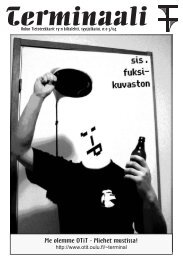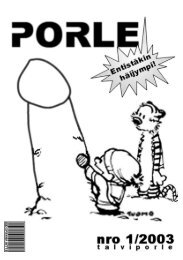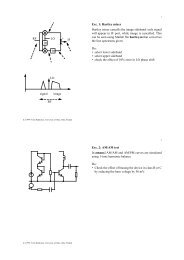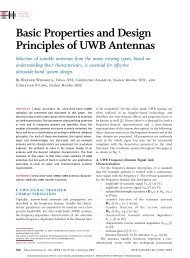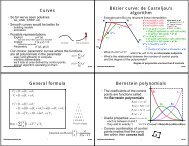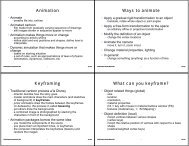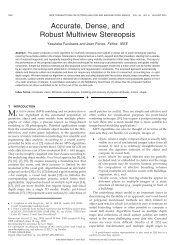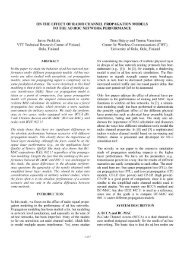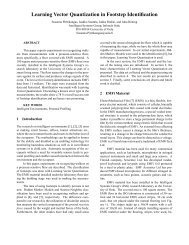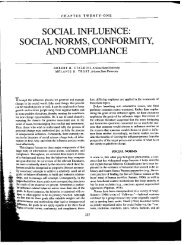Accurate and Practical Calibration of a Depth and Color ... - Oulu
Accurate and Practical Calibration of a Depth and Color ... - Oulu
Accurate and Practical Calibration of a Depth and Color ... - Oulu
Create successful ePaper yourself
Turn your PDF publications into a flip-book with our unique Google optimized e-Paper software.
{D}<br />
Tr<br />
{C}<br />
Td<br />
Tc<br />
zv<br />
{V}<br />
Fig. 1: Reference frames <strong>and</strong> transformations present on a scene. {C} <strong>and</strong> {D}<br />
are the color <strong>and</strong> depth cameras’ reference frames respectively. {V } is the reference<br />
frame anchored to the calibration plane <strong>and</strong> {W } is the world reference<br />
frame anchored to the calibration pattern.<br />
borders <strong>of</strong> the calibration object can be ignored <strong>and</strong> thus depth discontinuities<br />
are not needed. Figure 2 shows a sample image pair used for calibration. Figure<br />
Fig. 2: Sample calibration images. Note the inaccuracies at the table’s edge.<br />
3 shows the steps <strong>of</strong> the calibration <strong>and</strong> its inputs. An initial estimation for the<br />
calibration parameters is obtained by independently calibrating each camera.<br />
The depth intrinsic parameters Ld <strong>and</strong> the relative pose Tr are then refined using<br />
a non-linear optimization. Finally, all parameters are refined simultaneously.<br />
Corner based calibration. The calibration <strong>of</strong> a color camera is a well studied<br />
problem, we use Zhang’s method [2, 10] to initialize the camera parameters.<br />
Briefly, the steps are the following. The checkerboard corners are extracted from<br />
the intensity image. A homography is then computed for each image using the<br />
known corner positions in world coordinates {W } <strong>and</strong> the measured positions<br />
in the image. Each homography then imposes constraints on the camera parameters<br />
which are then solved with a linear system <strong>of</strong> equations. The distortion<br />
coefficients are initially set to zero.<br />
The same method is used to initialize the depth camera parameters. However,<br />
because the checkerboard is not visible in the depth image, the user selects the<br />
four corners <strong>of</strong> the calibration plane (the whole table in figure 2). These corners<br />
are very noisy <strong>and</strong> are only used here to obtain an initial guess. The homography<br />
is thus computed between {V } <strong>and</strong> {D}. This initializes the focal lengths,<br />
zw<br />
{W}




